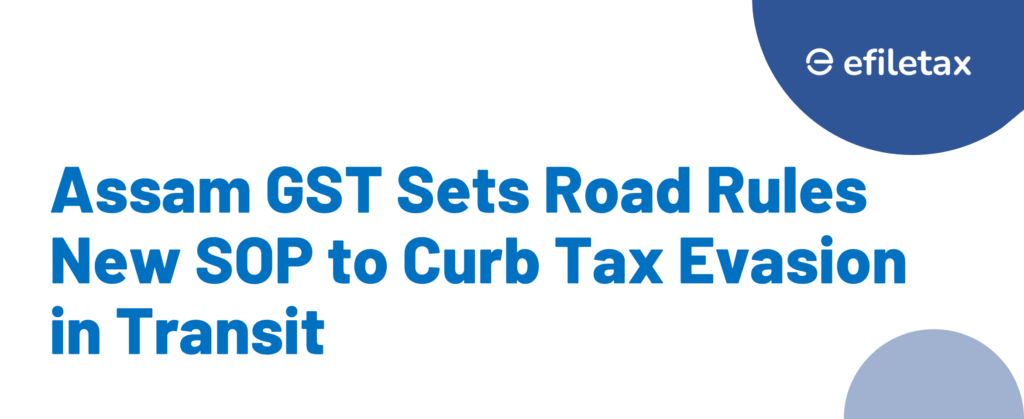
Summary
Assam GST Department has issued a Standard Operating Procedure (SOP) for road vigilance to combat tax evasion. It defines transporter duties, document checks, seizure rules, and penalties under GST enforcement.
GST Road Vigilance SOP in Assam: Key Compliance for Transporters
To strengthen enforcement against GST evasion, the Assam State Tax Department has introduced a Standard Operating Procedure (SOP) for road vigilance. This SOP outlines duties of transporters, powers of officials, and penalties for non-compliance during goods movement under GST.
This blog simplifies the new SOP for Indian businesses, consultants, and transporters operating in Assam.
Why Assam Issued This GST Vigilance SOP
- Non-generation or misuse of e-way bills
- Fake invoices
- Transport of goods without proper documents
- Concealment of consignments to evade GST
Assam, being a gateway to the Northeast, faces unique challenges in monitoring goods movement, especially at border checkpoints like Srirampur and Chagolia.
Scope of the Assam GST Road Vigilance SOP
Applicable To:
- All registered persons moving goods by road in Assam
- Transporters and warehouse operators
- GST enforcement and border check-post officials
Key Locations Covered:
- Border points (e.g., Srirampur, Chagolia)
- Intra-state road routes
- Major transit warehouses
Key Compliance Requirements for Transporters
| Requirement | Details |
|---|---|
| Valid E-Way Bill | Must be generated for all goods >₹50,000 |
| Tax Invoice / Delivery Challan | Must be carried physically or electronically |
| Vehicle Tracking | Officers may use GPS or surveillance tools to track vehicle movements |
| Vehicle Interception | GST officers authorised to stop and inspect at check-posts or en route |
| Physical Verification | If documents are found invalid or goods are suspicious |
| Statement in GST MOV-01 | Driver must submit statement at spot of interception |
| Seizure (GST MOV-07) | If evasion suspected, goods/vehicle can be seized until penalty is paid |
| Detention Penalty (Section 129) | 200% of tax payable or ₹25,000, whichever is higher |
| Inspection Report | Must be uploaded within 24 hours on GST portal by officer |
Legal Backing and Notifications
The SOP aligns with:
- Section 68 and Section 129 of the CGST Act, 2017
- Rule 138B and 138C of the CGST Rules (Inspection and MOV forms)
- Past CBIC Circulars like C.No. 41/15/2018-GST dated 13 April 2018
- Assam-specific enforcement notifications (as per latest SOP)
For full SOP PDF: assamtax.assam.gov.in
Expert View: Proactive GST Defence for Businesses
“Small businesses must train logistics partners to follow GST SOPs and MOV form processes. Non-compliance, even if accidental, can cost lakhs in detention fees and delay.”
— CA Mohan Iyer, GST Consultant, Guwahati
What to Do If Your Vehicle is Detained
- Check reason for detention in MOV-07
- Pay applicable tax + penalty online
- File Form GST DRC-03 for voluntary payment
- Apply for release using MOV-05
- Keep communication trail for appeal, if needed
Frequently Asked Questions (FAQs)
Q1. Is E-Way Bill mandatory in Assam for intra-state transport?
Yes, if goods value exceeds ₹50,000 or if notified by the Assam GST Department.
Q2. Can penalty be appealed?
Yes, under Section 107 of the CGST Act, within 3 months from order date.
Q3. What documents must be shown at check-posts?
Valid invoice, E-Way Bill, and ID proof of driver.
Q4. What is GST MOV-01?
It’s the initial statement recorded from the driver during vehicle interception.
Final Word
Assam’s GST Road Vigilance SOP is a step toward tighter compliance in border and intra-state transport. Businesses must prepare by training their logistics teams, automating e-way bill processes, and understanding MOV procedures.